The Premier League has always been very competitive; apart from the so-called ‘big six’ — a group which has largely become dominant — clubs like Newcastle United, West Ham, and Aston Villa are trying to invest and fight for places in Europe.
However, there has not been much talk about Fulham, maybe because the build-up play has not been as attractive as Roberto De Zerbi’s Brighton, or the set-pieces were not as creative as Brentford’s.
However, Marco Silva has been implementing a good project at Fulham, where the club sits comfortably in 12th place without heavy investment at the time of writing.
Therefore, this tactical analysis is a scout report detailing Fulham’s pressing flexibility and tactics under their Portuguese coach.
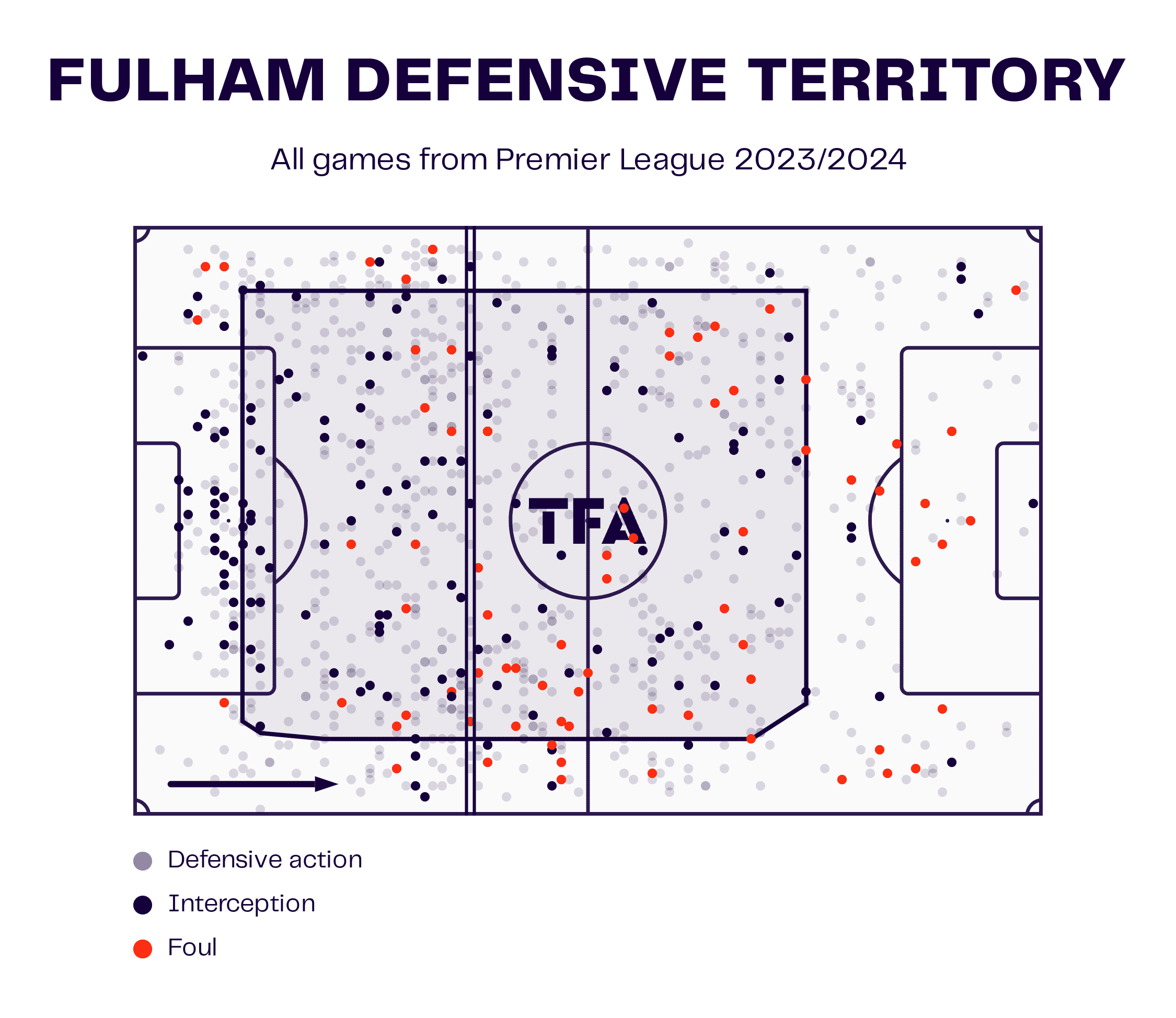
From this data viz that shows Fulham’s defensive territory, we could easily tell the tendency of their defending. They are not a high-pressing team but instead do their defending in midfield or even in their half quite often.
They don’t make many interceptions in the middle of the park, but many defensive events occurred on both flanks and the penalty box.
Wyscout data confirms that Fulham have the 11th-lowest PPDA in the league at 12.26.
This shows that they do not press high like Liverpool, whose PPDA was 7.96, but equally not as low as Sheffield United, with a PPDA of 19.08.
Still, they can implement their pressing strategy in many different ways and are good at adapting to their opponents.
We will explain the variations of Silva’s tactical setups below.
Controlling Arsenal
Although Fulham’s goal-conceded number (51 in 33 games) is not particularly impressive, sometimes they pull off good results against good opponents, such as beating Tottenham 3-0 at home, 2-1 versus Arsenal, 3-0 versus Brighton, and a 2-0 win over Manchester United at Old Trafford.
These good results were not a coincidence—Silva’s pressing tactics were essential to helping the team earn these achievements.
We’ll start by explaining how they set up against Arsenal in December.
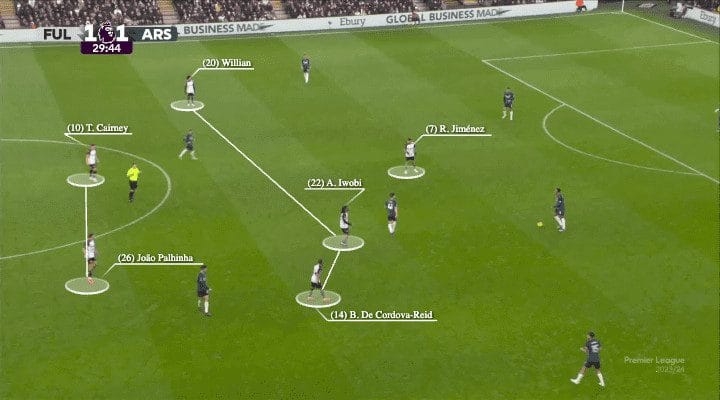
In this context, Silva lined up in a 4-2-3-1, but they were pretty flexible as the wingers were given alternate roles in defensive phases.
In the first image, when they stood reasonably high, it was still that 4-2-3-1, but they did not press like maniacs; they were happy to drop back a little bit from this area to allow Arsenal to gain some ground forward.
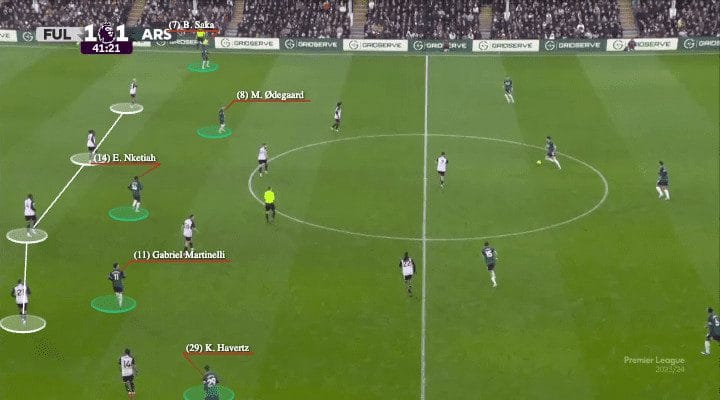
Arsenal are quite a positional team with a strict structure in possession.
Mikel Arteta wanted his team to dominate all vertical zones offensively so they could make the pitch as big as possible, and the team would end up in a 3-2-5 with some rotations and variations.
Across all the games against stronger opponents, Fulham were quite comfortable with defending in midfield.

The front five of Arsenal perfectly occupied all vertical zones, creating a +1 overload on the back four of Fulham, so Silva’s response was to drop down his right-winger, Bobby Reid, to compensate and balance the numbers.
Fulham were more like a 5-3-2 when defending rather than a 4-2-3-1.
The five of Fulham were quite good at closing down spaces centrally, and disallowing passes inside them.
Sometimes, this invited the opposition midfielder to drop out, as Declan Rice did here.
Since Reid was dropping down to form the back five, it gave the defenders confidence to shift quite early and quickly close down the space out wide when they saw passes moving there.
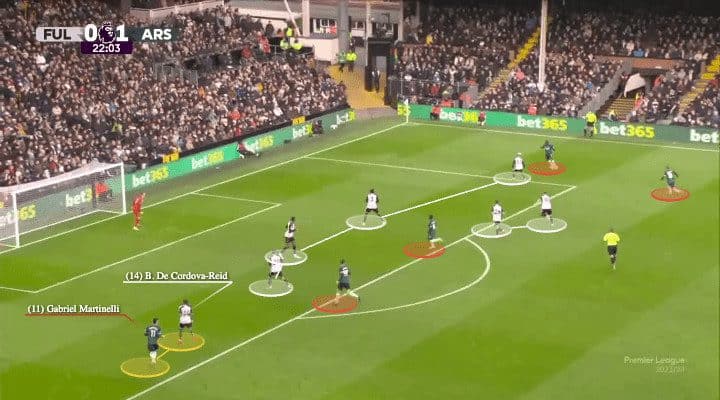
Another advantage of this Reid defensive position to compensate the backline was in crossing scenarios.
When Fulham were defending the penalty box, they had better coverage.
Now, when Gabriel Martinelli lurked at the far post, Reid could get in front of the Brazilian to clear the cross, while the Fulham right-back could stay closer to his centre-backs to narrow the gaps.
Shutting down Brighton
Now we’ll use another match as an example, which is Fulham’s 3-0 home win against Brighton, to show the variation of their approach.
Although De Zerbi is also a highly positional coach who had strict behavioural demands on his players, the 3-2-5 was not the main point of the Seagulls’ attack.
Instead, Brighton were good at attacking from the centre with their two holding midfielders to create different possibilities to play out.
They only want to bait the press to bite the build-up players, and then the space will open up for Brighton to exploit.
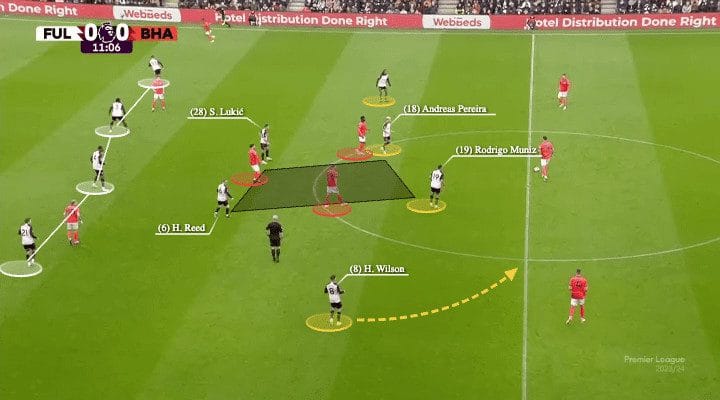
For example, here Brighton had two midfielders to support their central defenders, plus Adam Lallana in space between lines.
If the Fulham midfielders get dragged out, the likes of Lewis Dunk and Adam Webster were skilled to break lines and play past them.
Therefore, Silva’s Fulham emphasised protecting the centre with their two strikers dropped down.
Andreas Pereira and Rodrigo Muniz were closer to Saša Lukić and Harrison Reed, so they could support and cover each other more.
Then, the wingers could guide the opponent to one side with their directional press, so the right-winger Harry Wilson could stand higher than the Reid scenario against Arsenal.
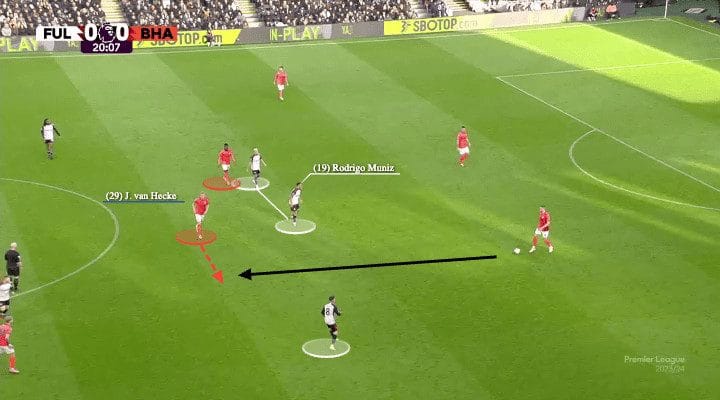
But the details of Fulham’s defending were more than that because sometimes you have to accept that the opponent is also good, like Brighton, who were highly skilled on the ball and could exploit spaces quite smartly in the build-up.
Here, Jan Paul van Hecke provides a good example of this, as the 2000-born Dutchman travelled on Muniz’s blindside to open the passing option behind Fulham’s first line.
Brighton wanted this because if Fulham’s second line reacted and jumped out to press, there would be even more space behind, which Brighton could exploit with some quick passes.
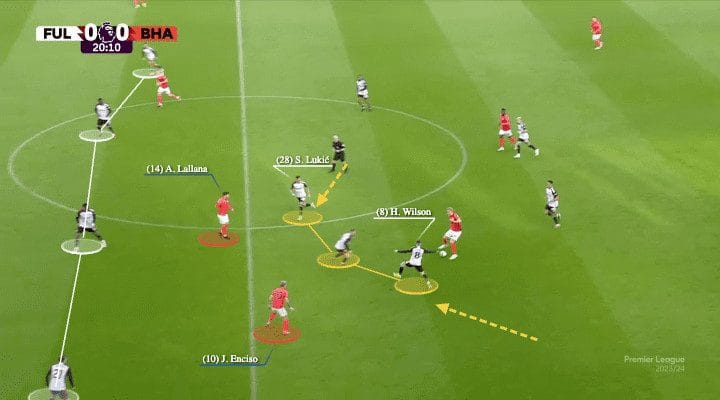
Despite the potential danger, Fulham reacted quite maturely to remove the threats as much as possible.
As soon as Van Hecke received and took some touches, the right-winger Wilson checked back to the centre as he intended to close the gap in central with Reed, so the pass should not go into Julio Enciso, who was behind the second line.
Then, the other midfielder, Lukić, also moved across to stay close to his teammates and make sure the former Liverpool player Lallana was in check.
From there, Silva’s side could ensure the opponent could not build plays easily from the centre even though they bypassed the first line.
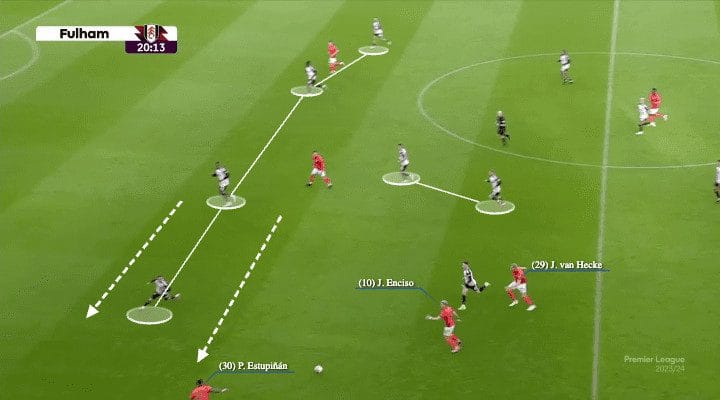
And those defensive behaviours were really important, as now Van Hecke had to take a suboptimal option – passing to the outside to Pervis Estupiñán.
Then, the attacking direction was much more predictable, allowing Fulham’s third line to shuffle across and provide cover.
Then, the attack was slowed down, and no threat was created from there.
This example shows Silva and his staff studied their opponent well and geared up the players on the game they needed to play.
Examples from other contexts
Apart from those two games, we also picked up some other examples against different opponents to illustrate the variations in Fulham’s defence.

They had a quite nice 3-0 win over Tottenham in March, and as we all knew, Ange Postecoglou liked to have his full-back inverted into the centre and quite wide wingers to create passing lanes to the side.
He also continued with underlapping runs to exploit in the final third.
So, Silva also adjusted the details of his Fulham side.
One role of the winger became tracking the full-back so they could allow their full-back to stay on the Tottenham winger.
This clear division of roles allows the player to focus on their task without too much confusion when Tottenham full-back underlapped.
As we’ve shown here, Alex Iwobi had Destiny Udogie, while Timothy Castagne had Brennan Johnson—a clear 2v2.
If you compare this scenario with the goal Tottenham scored on Luton Town recently, the communication and defending in wide spaces were on a different level.
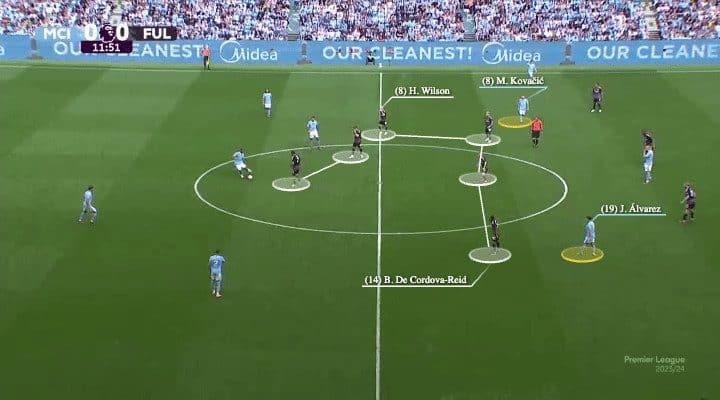
Playing at the Etihad against Manchester City, despite suffering a 1-5 loss, Silva’s Fulham limited Pep Guardiola’s side to six non-penalty shots in total.
If you look at the general structure of Fulham in that game, it is a different story.
As City played a 3-2-4-1 with two holding midfielders and two players higher up in half-space, Fulham’s front six stayed central to block the space there.
Noticeably, the right-winger Wilson was closer to his strikers than defending outside.
They tried not to let City play past them directly to Julian Álvarez or Mateo Kovačić.
Although City are also a positional team like Arsenal and Brighton, their approach was different in details and could change from game to game to adapt to the opponent’s strengths.
Conclusion
As we explained in this analysis, Silva’s Fulham were flexible in their defending tactics, and they could change their approach from game to game to adapt to the opponent.
Although they did not have the huge investment or individual quality that could push themselves to Europe, for all they have done, it will be enough to register for another Premier League season.

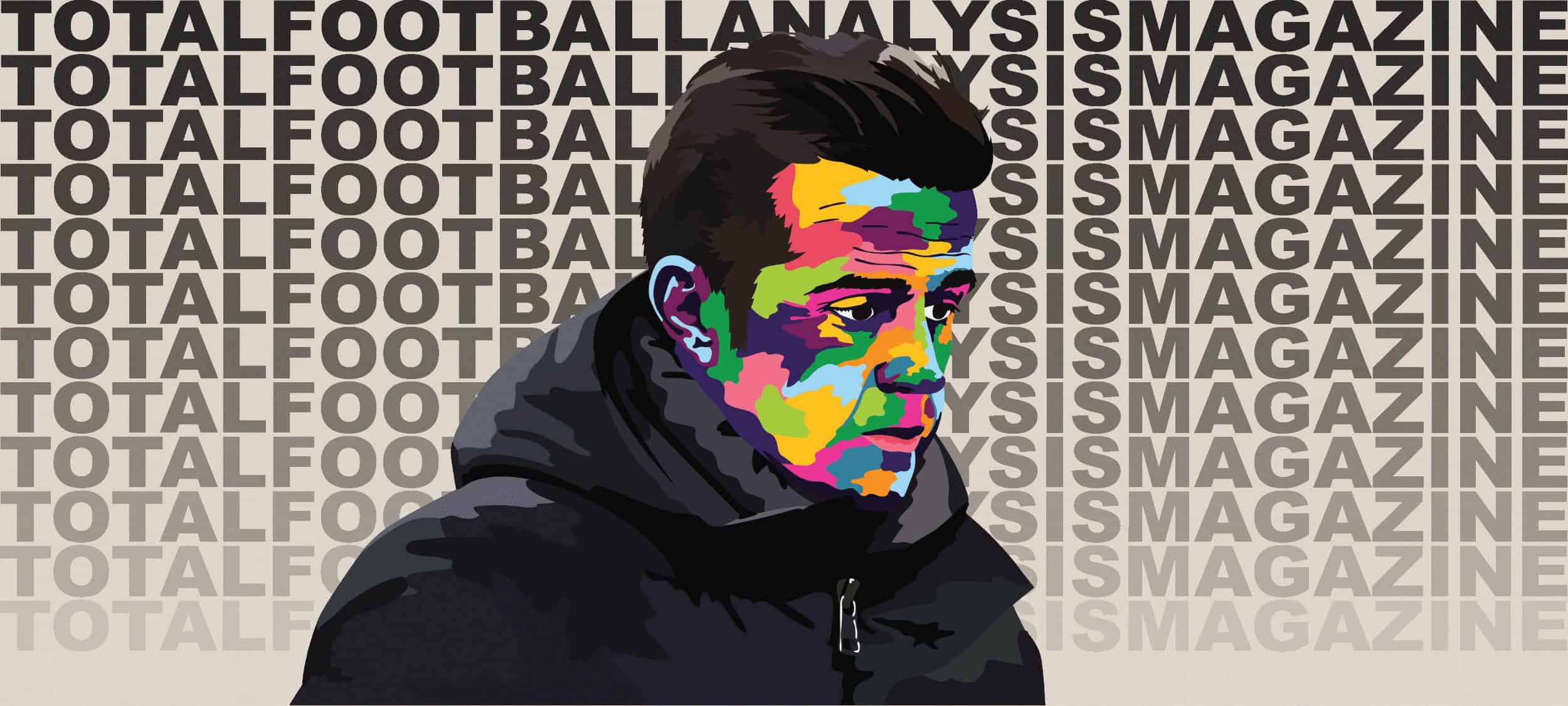



Comments